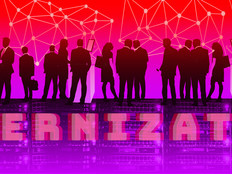7 Reasons Agencies Should Consider Hyperconvergence
Particularly in local governments, the demand for IT resources is under unprecedented pressure. The rise of Big Data, the consumerization of technology and the explosion of network-enabled devices create a need for data centers that can both handle the load generated by these requirements and respond dynamically to changing demands. A few years ago, reconfiguring data centers for new needs required substantial planning, lead time to order appropriate equipment and careful architectural design. Today, the advent of hyperconverged infrastructure means data centers can be flexible and scalable, allowing for rapid reconfiguration of equipment at a cost-effective price.
From the CIO’s perspective, hyperconverged infrastructure (HCI) makes financial sense. Agencies can purchase the core building blocks of compute, storage and networking in modular units and take advantage of hyperconvergence software to reallocate those resources as needed. Essentially, hyperconvergence brings the scalability and simplicity of the cloud to enterprise data centers — without requiring siloed technical expertise to configure and manage different layers of the technology stack. This technology makes the software-defined data center a practical reality.
Some local governments are already seeing the benefits of hyperconvergence, such as Louisiana, which moved forward on a project to deploy Dell-Nutanix hyperconverged infrastructure for the Louisiana Department of Health.
“The decision to move to Dell-Nutanix saved the state millions of dollars on this project and allowed us to procure additional technologies to bolster the state’s virtualization and cloud computing strategy,” Louisiana Chief Technology Officer Michael Allison tells StateTech.
By replacing the state's legacy systems, the new infrastructure will let the IT team spin up services easily as virtual machines. This design aligns with the state’s cloud-first strategy and will allow seamless scalability between on-premises and public cloud solutions.
The Benefits of a Modernized Data Center
Still not convinced? Check out these seven key benefits that HCI offers agencies seeking to modernize their data centers:
-
Scalability and Flexibility: Hyperconvergence allows technology teams to meet dynamically changing business requirements for IT resources by shifting resources between workloads on a just-in-time basis. The IT infrastructure scales in a flexible manner that matches the needs of the organization, rather than expecting the organization to adapt to the capacity of the technology platform.
-
Quick Deployment: In addition to rapidly reallocating resources between applications, the use of commodity hardware in HCI environments lets the organization rapidly deploy additional storage and computing capacity in the proportions demanded by business workloads.
-
Data Protection: Consolidating storage within the HCI platform lets organizations rethink their data protection solutions and manage data protection across the entire infrastructure, rather than server by server.
-
Workload Mobility: The dynamic nature of HCI facilitates the easy migration of IT applications and workloads across platforms as needs change and capacity fluctuates.
-
High Availability: HCI allows organizations to improve fault tolerance by adding a layer of high availability. In addition to managing availability at the application layer, organizations can leverage redundancy in their HCI platform to isolate workloads from the impact of failed computing nodes and storage devices.
-
Data Efficiency: HCI delivers greater performance in a smaller form factor, improving the efficiency of storage solutions. HCI platforms can integrate traditional spinning disks and solid-state drives and shift data between storage media to efficiently balance performance and cost.
-
Cost-efficiency: HCI eliminates the need for dramatic overprovisioning, allowing the organization to purchase additional capacity when it is needed and to share capacity among workloads to meet peak demand, without having storage and compute resources sitting idle.
These benefits form the core argument for the use of HCI as the foundation of on-premises enterprise data centers. As organizations shift greater proportions of their workloads to HCI, they will achieve corresponding increases in efficiency, flexibility and mobility while decreasing their capital infrastructure expenditures.
Want to learn more about how CDW can help you move to a hyperconverged infrastructure? Check it out here.








